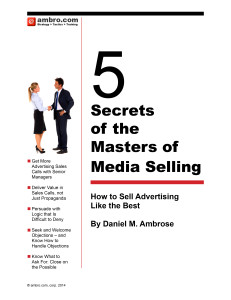One of the most difficult situations in advertising sales is sales people’s fear that they don’t know enough about a prospects’ needs.
How can sales people approach a client and say they understand the client’s needs, to make a recommendation, when clients won’t take time to share their needs, or perhaps doesn’t even understand their needs very well? Advertising sales people fear being “wrong,” so they spend too much time preparing and not enough engaged with prospects where they can make a difference.
 The solution to overcoming fear of being wrong, is avoiding the need to be right. Journalists do this all the time by asking first the obvious, then the un-obvious question. Columbo, my favorite disheveled TV detective, would pose two conflicting sets of facts and ask questions trying to resolve them.
The solution to overcoming fear of being wrong, is avoiding the need to be right. Journalists do this all the time by asking first the obvious, then the un-obvious question. Columbo, my favorite disheveled TV detective, would pose two conflicting sets of facts and ask questions trying to resolve them.
The way that fear of being wrong gets in the way of understanding was illustrated in the most interesting way at the beginning of this interview on the Motley Fool by David Gardner of Michael Lewis about his book Flash Boys. Take a listen to hear how Wall-Streeters determination that they “must know it all” got in the way of them asking questions to understand high-frequency trading. Notice that the Columbo “ask a dumb question” approach is one they believe in, too!
The best way for a sales person to approach the unknown client-situation is to form a hypothesis. Then test the hypothesis with questions. By saying “I’ve been thinking about your situation and I have a hypothesis that we can increase your results by doing so and so,” a sales person sounds prepared, which is the first step in engaging a client. If you don’t sound prepared clients don’t pay attention. But too much preparation means the sales person never gets into the sales call. So floating a hypothesis is thoughtful, and it gets the client talking. Once the client is talking you are on the way to a sale.
Learn more here about how ambro.com provides complete advertising sales training skills training.

